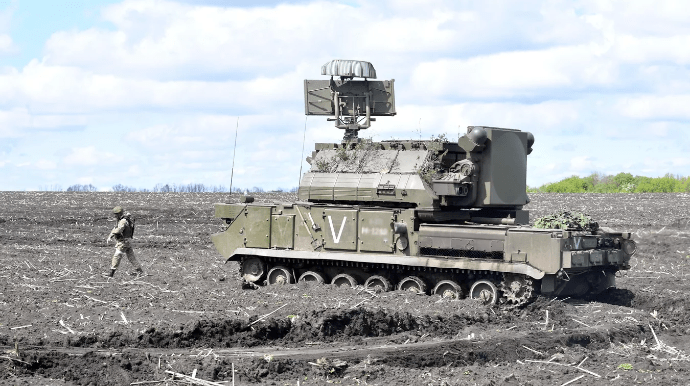MBDA and its subsidiary Matra Electronique (MEL), which specialises in manufacturing high-precision electronic equipment, jointly…

Through the following video (end of article), Cerbair highlights the necessity of using various systems on the modern battlefield to deal with drones (anti-drone systems) in particular.
The video depicts a TOR-type anti-aircraft system (M1 or M2) failing to hit a DJI MAVIC 1-type drone that was hovering or flying at low speed.

From the available footage, it can be estimated that the TOR’s track and lock-on radar performed effectively as it was able to successfully locate and guide the missile against such a small and slow target, even though the missile did not explode in the terminal phase.

The TOR system uses target illumination via tracking radar since the missile (9M331) does not feature a seeker. During the terminal phase, the missile’s proximity fuze takes over the explosion of the missile’s 15 kg warhead via a small radar antenna on the missile’s warhead.
Also read: TOR M1 | The reliable SHORAD of the National Guard
However, in this case, it appears that the proximity fuze did not work efficiently and this is likely, given the small size of the target and its slow speed, even though the TOR is theoretically an air defence system for point defence.
In any case, it can be concluded that it is neither operationally nor economically desirable to launch an expensive anti-aircraft missile with a limited depot against such a low-value target.
According to Cerbair, it would be more cost-effective to use a specialized system against this type of threat, as the additional cost of such a system would be quickly depreciated by saving the more expensive anti-aircraft missiles.
Also read: Cerbair | Lessons learned from the Houthi drone attacks in the UAE
The scenario of dealing with drones or other low RCS threats such as artillery shells, mortars, and rockets has been highlighted several times by our website. Below you can read a relevant article with references to the National Guard’s TOR M1.
Also read: Ahead® ammunition and the prospect of upgrading “OTHELLOS” for the National Guard | Photos & VIDEO
READ MORE
US Army | Inks $435 million deal for new TNT production facility
As part of its quest to boost weapons production, the US Army is reestablishing TNT production on US soil, inking a deal to build out a…
Ticonderoga | The US Navy is extending the operational life of three cruisers
The US Navy has announced that it is extending the operational life of three Ticonderoga-class cruisers. The decision will…
NATO | Emergency Cyber Security Conference in London
With the risk of multiple hybrid attacks on critical sectors for Britain’s infrastructure, as well as on large businesses by Russian hackers…
Russia | Recruiting hundreds of Yemeni Houthis in war against Ukraine
Russia is recruiting hundreds of Yemeni Houthis for the war against Ukraine. The men were brought to Russia through a…
Sweden | Funding for the production of Ukrainian long-range drones
Sweden has agreed to finance the production of Ukrainian long-range unmanned aerial vehicles, Ukraine’s Defence Ministry announced…
HCDI | Elite recruits in innovation roles in the Hellenic Armed Forces
A new program for the utilisation of scientifically qualified Greek citizens who are called to fulfil their military service is being…
Russia | Debt cancellation for recruits who agree to fight in Ukraine
Russian President Vladimir Putin has signed a bill that will erase the debts of recruits joining the army to fight in Ukraine, according…
PwC Cyprus, Multimarine, SignalGeneriX, and Theophrastus Join Forces for the EDA’s Symbiosis Project
A leading Consortium comprising PwC Cyprus, Multimarine Services Ltd, SignalGeneriX Ltd, and Theophrastus Research Institute, has been…






















